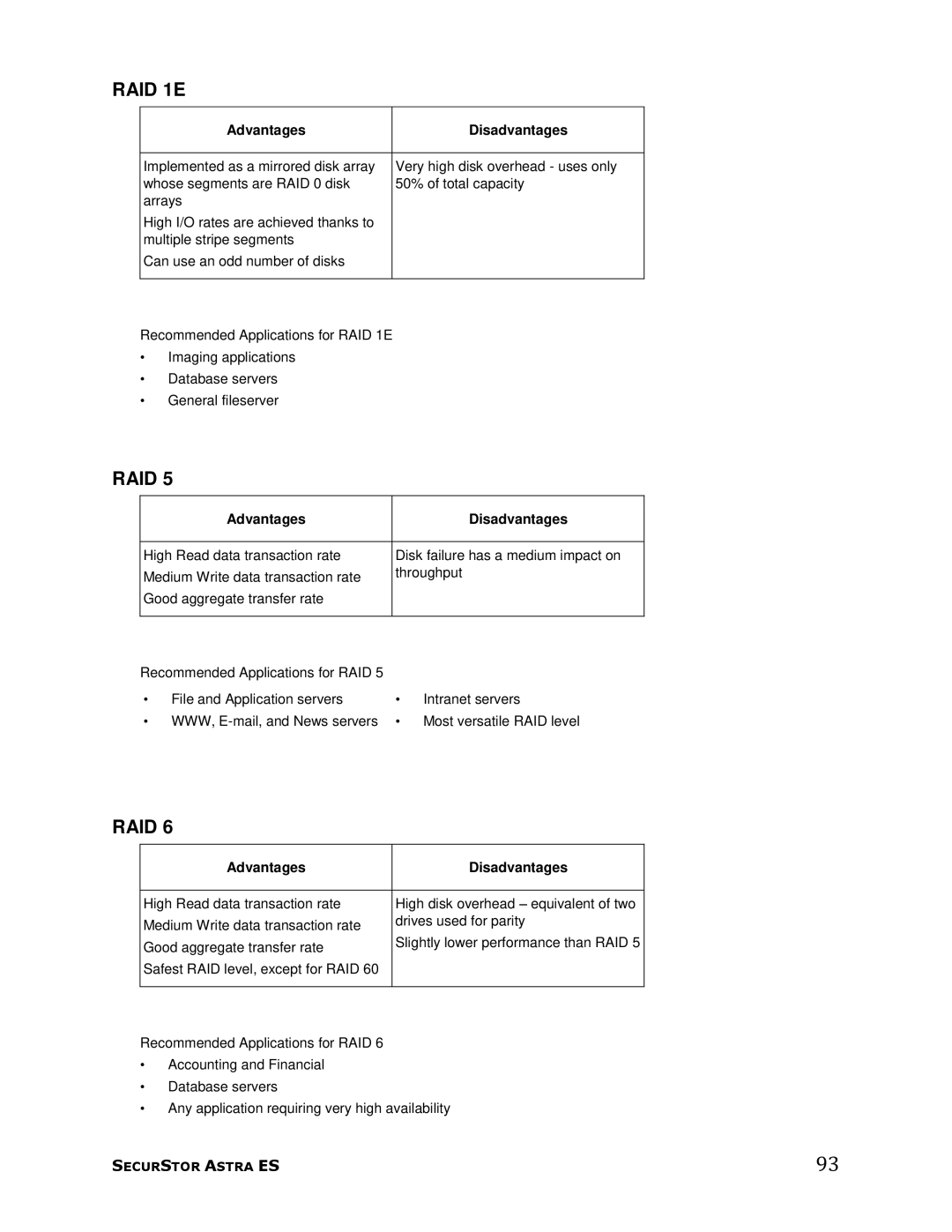RAID 1E
Advantages | Disadvantages |
|
|
Implemented as a mirrored disk array | Very high disk overhead - uses only |
whose segments are RAID 0 disk | 50% of total capacity |
arrays |
|
High I/O rates are achieved thanks to |
|
multiple stripe segments |
|
Can use an odd number of disks |
|
|
|
Recommended Applications for RAID 1E
•Imaging applications
•Database servers
•General fileserver
RAID 5
Advantages |
| Disadvantages |
|
| |
High Read data transaction rate | Disk failure has a medium impact on | |
Medium Write data transaction rate | throughput | |
|
| |
Good aggregate transfer rate |
|
|
|
|
|
Recommended Applications for RAID 5 |
|
|
• File and Application servers | • | Intranet servers |
• WWW, | • | Most versatile RAID level |
RAID 6
Advantages | Disadvantages |
|
|
High Read data transaction rate | High disk overhead – equivalent of two |
Medium Write data transaction rate | drives used for parity |
| |
Good aggregate transfer rate | Slightly lower performance than RAID 5 |
| |
Safest RAID level, except for RAID 60 |
|
|
|
Recommended Applications for RAID 6 |
|
•Accounting and Financial
•Database servers
•Any application requiring very high availability
SECURSTOR ASTRA ES | 93 |
